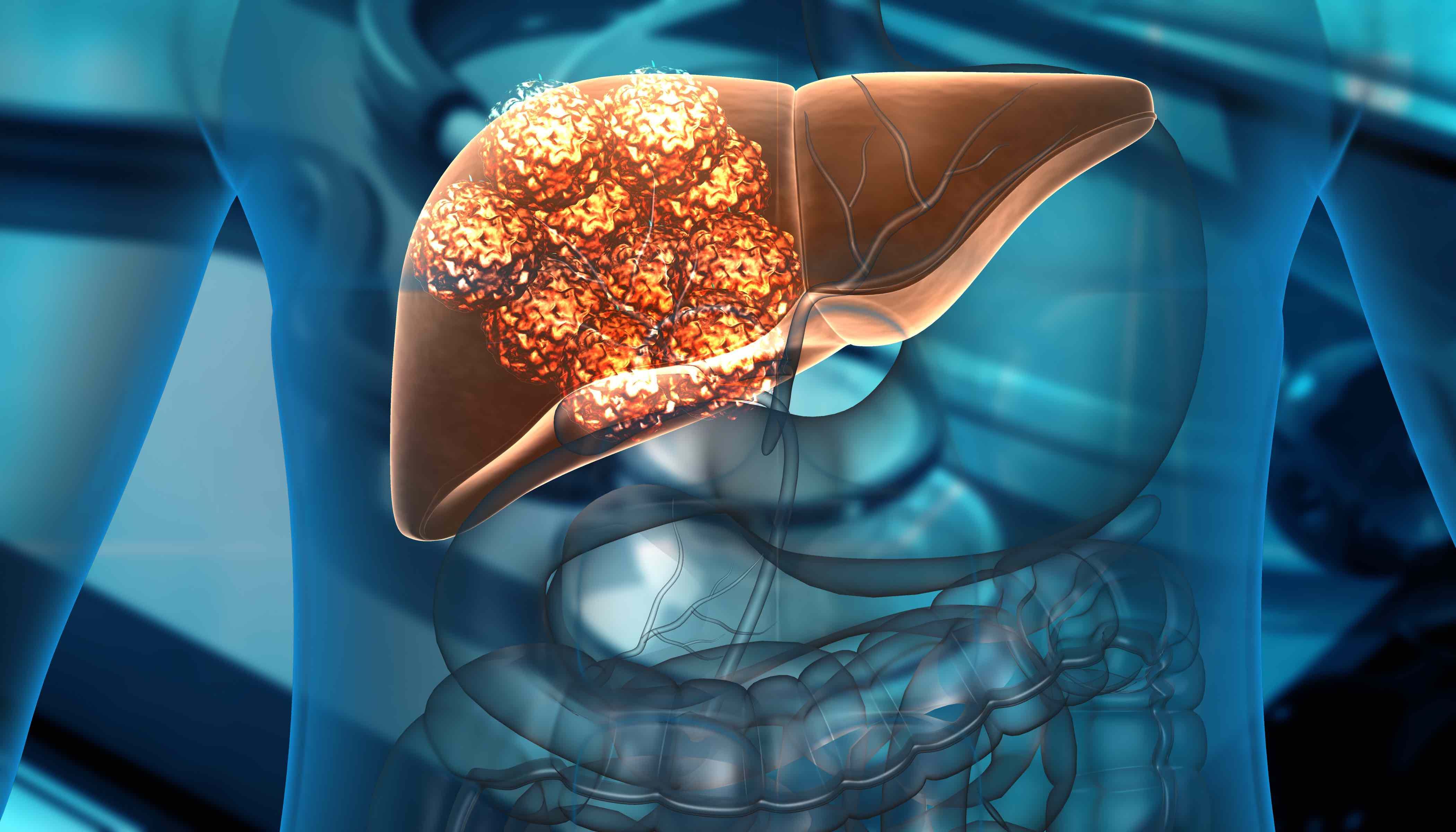News
Article
Study Finds Distinct Tumor Microenvironment Characteristics in HBV-Related HCC
Author(s):
The analysis revealed that viral hepatocellular carcinoma (HCC) had a distinct microbial signature vs non-viral HCC, although only hepatitis B virus–related HCC showed a significantly diverse tumor microbiome.
Hepatocellular carcinoma (HCC) related to hepatitis B virus (HBV) exhibits a specific microbial signature compared with non‐HBV/non–hepatitis C virus (HCV) HCC, according to a study published in the Journal of Medical Virology. Researchers also identified Cutibacterium, which was more abundant in HBV-related vs non‐HBV/non-HCV (NBNC) HCC, as a representative taxa biomarker in HBV-related HCC.
Liver cancer | Image credit: Rasi - stock.adobe.com

Chronic HBV and HCV are leading etiologies of HCC, the authors explained, with approximately 60% to 70% of HCC associated with HBV or HCV. Furthermore, chronic viral hepatitis is associated with gut microbiome imbalances. Such infections have also been linked with monocytic myeloid‐derived suppressor cell (MDSC) expansion. MDSCs have been found to promote both cholangiocarcinoma and HCC by inhibiting natural killer (NK) cells, which are known to limit the spread of tumors and microbial infections.
“During the process of viral pathogenesis and cancer development, liver colonized microbiota may play a role in synergistically regulating tumor microenvironment (TME), especially in the recruitment of suppressive cells, including MDSCs,” the authors explained.
The study aimed to characterize the TME, including the tissue colonized microbiota, liver cancer cells, and infiltrating immune cells, by performing multiplex immunofluorescence histochemistry (mIFH) on formalin‐fixed paraffin‐embedded deidentified patient tissue.
The analysis revealed that viral HCC had a distinct microbial signature vs NBNC HCC, although only HBV-related HCC showed a significantly diverse tumor microbiome.
Taxa that were more abundant in HBV-related HCC included Dolosigranulum, Prevotella 9, Cutibacterium, and Nocardioides, and Chryseobacterium was chosen as the favored biomarker NBNC HCC. Cutibecterium had the highest abundance and was therefore deemed a representative taxa biomarker in HBV-related HCC.
Using mIFH to detect cancer cells and infiltrating tumor cells simultaneously with defined regions of interest, the researchers found that intratumoral microbiota were positively associated with increased tumor‐infiltrating CD8+ T lymphocytes in HBV-related HCC. However, they were not associated with increased CD56+ NK cells.
Two MDCS subtypes, monocytic MDSCs and polymorphonuclear MDSCs, were also positively associated with intratumoral microbiota in HBV-related HCC. This finding suggests these microbial species may play an inhibitory role in antitumor immunity as contribute to the liver TME in conjunction with viral hepatitis in HCC development, the authors explained.
The authors noted that the study was limited by a relatively small sample size due the scarcity of liver cancer tumor samples.
“Although HCC‐associated tumor microbiome has been investigated by others before, the previous efforts were mainly focused on of microbial composition using metagenomic taxonomic profiling study, we characterized the spatial signal of approaches. In this microbiota‐derived components, liver cancer cells, and immune cells to assess the association between microbiota density and specific immune cell populations in the background of HBV infection.”
Future research to more fully characterize and understand tumor microbiome functions across cancer etiologies could help determine new avenues where there is potential for manipulation of the tumor microbiome, which could potentially be explored as a treatment option in HCC and other cancers.
Reference
Liu Y, Kim ES, Guo H. Hepatitis B virus-related hepatocellular carcinoma exhibits distinct intratumoral microbiota and immune microenvironment signatures. J Med Virol. 2024;96(2):e29485. doi:10.1002/jmv.29485
2 Commerce Drive
Suite 100
Cranbury, NJ 08512
© 2025 MJH Life Sciences® and AJMC®.
All rights reserved.




